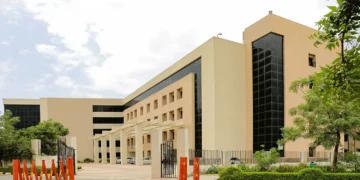In the age of smart cities and digital transformation, government buildings are no longer just physical spaces—they’re becoming intelligent ecosystems. One of the key technologies driving this shift is the digital twin. While the concept originated in manufacturing and aerospace, it is now rapidly gaining traction in the public sector, particularly for the management and operation of government facilities.
A digital twin is a virtual representation of a physical asset, updated in real-time with data from sensors, IoT devices, and external systems. When applied to government buildings, digital twins offer a powerful tool to optimize operations, improve decision-making, and enhance public service delivery. In this article, we’ll explore the benefits, challenges, and real-world applications of digital twin technology in government buildings.
Benefits of Digital Twins in Government Buildings
1. Enhanced Operational Efficiency
Government buildings—such as courthouses, administrative offices, hospitals, and schools—are complex to manage. Digital twins allow facility managers to monitor systems like HVAC, lighting, and security in real time. This proactive oversight helps reduce downtime, optimize energy consumption, and ensure comfort for both employees and the public.
2. Predictive Maintenance
Rather than relying on scheduled maintenance or reactive repairs, digital twins enable predictive maintenance. By continuously analyzing data from equipment, the system can predict failures before they occur. This reduces repair costs, extends the lifespan of assets, and minimizes service interruptions.
3. Improved Space Utilization
Post-pandemic, many government agencies are rethinking how space is used. Digital twins can track occupancy, foot traffic, and room usage to help redesign spaces for better functionality and efficiency. This insight can support hybrid work models, improve accessibility, and reduce unused space.
4. Informed Decision-Making
Digital twins provide a centralized, real-time overview of building operations. Government leaders and facility managers can make data-driven decisions on budgeting, energy use, capital investments, and emergency preparedness with greater confidence.
5. Sustainability and Energy Management
As governments strive to meet sustainability goals, digital twins help track and manage energy usage, carbon emissions, and water consumption. By identifying inefficiencies and simulating improvements, buildings can significantly reduce their environmental footprint.
Challenges in Implementing Digital Twins for Public Buildings
While the potential is enormous, implementing digital twins in the public sector comes with several challenges:
1. High Initial Costs
Creating a digital twin involves 3D modeling, IoT integration, cloud infrastructure, and skilled personnel. These initial investments can be steep—especially for older buildings that require retrofitting with smart sensors.
2. Data Privacy and Security
Government buildings often house sensitive operations and personal data. The real-time nature of digital twins means continuous data flow, which opens the door to cybersecurity threats if not managed properly. Implementing strict protocols and secure architectures is essential.
3. Integration with Legacy Systems
Many government buildings rely on outdated infrastructure or systems. Integrating these with modern digital twin platforms can be technically complex and time-consuming, requiring customized solutions and phased rollouts.
4. Lack of Technical Expertise
Digital twin projects require expertise in IoT, data analytics, BIM (Building Information Modeling), and AI. Many government agencies lack in-house capabilities and need to collaborate with private sector partners to fill the gap.
5. Interdepartmental Coordination
Implementing digital twins often requires collaboration across multiple departments—IT, facilities, procurement, and leadership. Ensuring smooth communication and shared objectives is crucial to avoid project delays and scope creep.
Real-World Applications of Digital Twins in Government Facilities
1. Smart City Control Centers
Cities like Singapore and Dubai are using digital twins to monitor entire districts, including government buildings. This allows authorities to manage traffic, air quality, utilities, and emergency response from a central platform.
2. Courthouse and Justice Facility Management
Digital twins can optimize operations in courthouses by monitoring security systems, managing visitor flow, and automating climate control—all while maintaining high standards of security and transparency.
3. Educational Institutions
Public universities and schools can use digital twins to monitor classroom usage, plan renovations, and manage utilities. During health crises, the technology can help manage air quality and enforce social distancing measures.
4. Disaster Preparedness and Emergency Response
In disaster scenarios, digital twins offer real-time visibility into the structural integrity and occupancy status of government buildings. This aids first responders and supports rapid recovery planning.
5. Historical and Cultural Sites
For government-owned cultural landmarks, digital twins can assist in preservation efforts. By creating detailed 3D replicas, authorities can monitor deterioration, simulate restoration work, and offer immersive virtual tours to the public.
Conclusion
Digital twins represent a transformative opportunity for government agencies to improve how they manage, maintain, and evolve their building assets. From operational efficiency and sustainability to smarter public services and improved safety, the benefits are compelling.
However, realizing the full potential of this technology requires strategic investment, skilled implementation, and cross-departmental collaboration. As more governments begin to adopt smart infrastructure strategies, digital twins are likely to become a cornerstone of future-ready public buildings.
By embracing this innovation now, government agencies can not only reduce costs and environmental impact but also build more resilient, adaptable, and citizen-centric infrastructure for the decades to come.




















